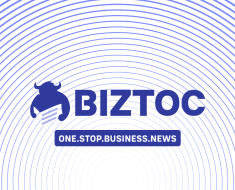This research is based on unique data collected from our proprietary audience of publisher, agency, brand and tech insiders. It’s available to Digiday+ members. More from the series →
This year has been a bit of an emotionally exhausting one, whether you’re talking about marketing or media. The economy, fragmenting social platforms, revenue (or lack thereof) — we’ve all been through a lot.
Throughout the year, Digiday+ Research tracked the ups and downs in the media and marketing industries through regular surveys of publisher, agency, brand and retailer professionals. Below, we round up the biggest trends of the year, based on the data that resonated the most with our readers.
2023’s biggest takeaway: We might actually enter a world without cookies next year — to varying degrees of preparedness
The death of the third-party cookie is actually a real thing that is coming in the near future (we think). So Digiday readers wanted to know what marketers and publishers alike were doing to prepare. Those preparations turned out to be all over the map, but we can at least say that preparations for a cookieless world were definitely underway in 2023 in both the marketing and media industries.
Key stats:
- 73% of agency pros said they agreed somewhat or strongly that their businesses were actively preparing for a cookieless future in the second quarter of this year.
- 72% of brand pros said in Q2 they agreed somewhat or strongly that their businesses were actively preparing for the third-party cookie to go away. But only 31% fell into the “agree strongly” category.
- 70% of agency pros said in Q2 their businesses are spending more on contextual targeting campaigns to prepare for the end of the third-party cookie — up from 47% last year — making contextual targeting the top cookie alternative among agencies as of halfway through the year.
- 69% of brand pros said in Q2 they’re investing in technology to acquire more first-party data, making first-party data the clear winner among brands when it comes to what exactly will replace the third-party cookie.
- 16% of brands said in Q2 they’ve decreased their digital ad spend as the third-party cookie comes to an end, up from 7% last year.
- 69% of publisher pros said in Q2 they agreed somewhat or strongly that their businesses were actively preparing for the death of the third-party cookie.
- 82% of publisher pros said in Q2 they are currently using first-party data to prepare for the cookie’s demise, and nearly half are also taking first-party data-related actions: 44% said they’re requiring users to register and 43% said they’re integrating first-party data segments into demand-side platforms.
- 59% of publisher pros said in Q2 that Apple will gain a lot or a little from the end of the cookie, with 31% saying the tech giant will gain a lot. Meanwhile, 63% said Meta will lose a lot or a little, with 43% saying Meta will lose a lot.
The charts that tell the story:
Read the stories:
Meta remained the major player in the social media space this year, but its dominance is on rockier ground than it has been in years past. Digiday+ Research data found that, while brands and publishers find value in Instagram (a big deal for the latter group, which historically has had a hard time finding its footing on the platform), agencies as a whole weren’t really feeling the love for Meta’s social platforms this year.
Key stats:
- 50% of agency pros said this year that they posted content to Facebook on behalf of their clients, down from 81% last year, and 65% said they posted on Instagram, down from 84% last year.
- 14% of agency pros said their clients post content on Facebook every day and 17% said the same of Instagram, down from 40% last year for both platforms.
- 50% of agency pros said they purchase Facebook advertising on behalf of clients and 48% said they purchase Instagram advertising, down from 81% last year for both platforms.
- 75% of agency pros said Facebook is at least somewhat valuable to driving their revenues, down from 90% last year, and 77% said Instagram is valuable to driving revenues, down from 88% last year.
- 85% of brand pros said they spend at least a very small portion of their marketing budgets on Facebook and Instagram, making the platforms the third-most invested in marketing channel among brands.
- 46% of brand pros said in Q1 they were confident that Instagram drives marketing success, up from 38% in Q3 2022 and 30% in Q1 2022.
- 91% of publisher pros said their titles post content to Instagram, up from 86% last year and 84% the year before.
- 61% of publisher pros said their titles purchase advertising on Instagram, a big jump from the 46% who said the same last year.
- 83% of publisher pros said Instagram is at least somewhat valuable to driving their revenues, up from 62% last year.
- 49% of agency pros they’re not sure if they see marketing potential for Threads. The remaining agency respondents were split one way and the other, with 26% saying they do see marketing potential for Threads and 25% saying they don’t think the platform has marketing potential.
The charts that tell the story:
Read the stories:
In third place: To use or not to use generative AI
Generative AI has been on a tear this year, and so have adoption rates of the technology in the marketing and media industries. Digiday+ Research asked agencies, brands and publishers about their use of generative AI this year, and readers were interested to find there are higher adoption rates among some groups compared with others.
Key stats:
- 71% of agency pros said their companies were already using generative AI technology before this year’s halfway point.
- 75% of agency pros said they’re using generative AI for writing copy, 73% are using it for research, 65% said they’ve incorporated the technology into their content creation (outside of video and audio) and 50% are using it for marketing purposes.
- 56% of brand pros said in the first half of the year they weren’t using generative AI yet.
- 49% of publisher pros said their companies were using generative AI in the first half of the year.
- 63% of publisher pros said they’re using generative AI for writing copy, 49% said they use it for research and 46% said they use it for marketing purposes.
- 54% of publishers not using generative AI said they plan on incorporating the technology sometime in the next year.
The charts that tell the story:
Read the stories:
Honorable mention: Publishers’ revenues were a big concern
Digiday+ Research asked publishers a lot about their revenues during a tough year — and our readers were interested in the results. This isn’t a surprise considering the year didn’t start off great as far as publishers’ attitudes toward advertising revenue: 43% of publisher pros said heading into the year that they agreed their companies’ ad revenue would grow in 2023, down from 75% in 2022. Overall, Digiday+ Research found that publishers relied on 6.41 revenue sources on average in 2023, compared with 6.60 in 2022.
Programmatic ads were a big business for publishers this year — with room to grow in the category: 85% of publisher pros said in Q1 they got at least a very small portion of their revenue from programmatic ads, and 84% said they put at least some focus on growing that part of their business. Meanwhile, publishers identified video advertising as a potential growth area this year: 74% of publisher pros said in Q1 they got at least a very small portion of their revenue from video ads, and 81% said they would put at least a very small focus on building their video ads business.
Here are the charts that tell the story:
Read the stories:




